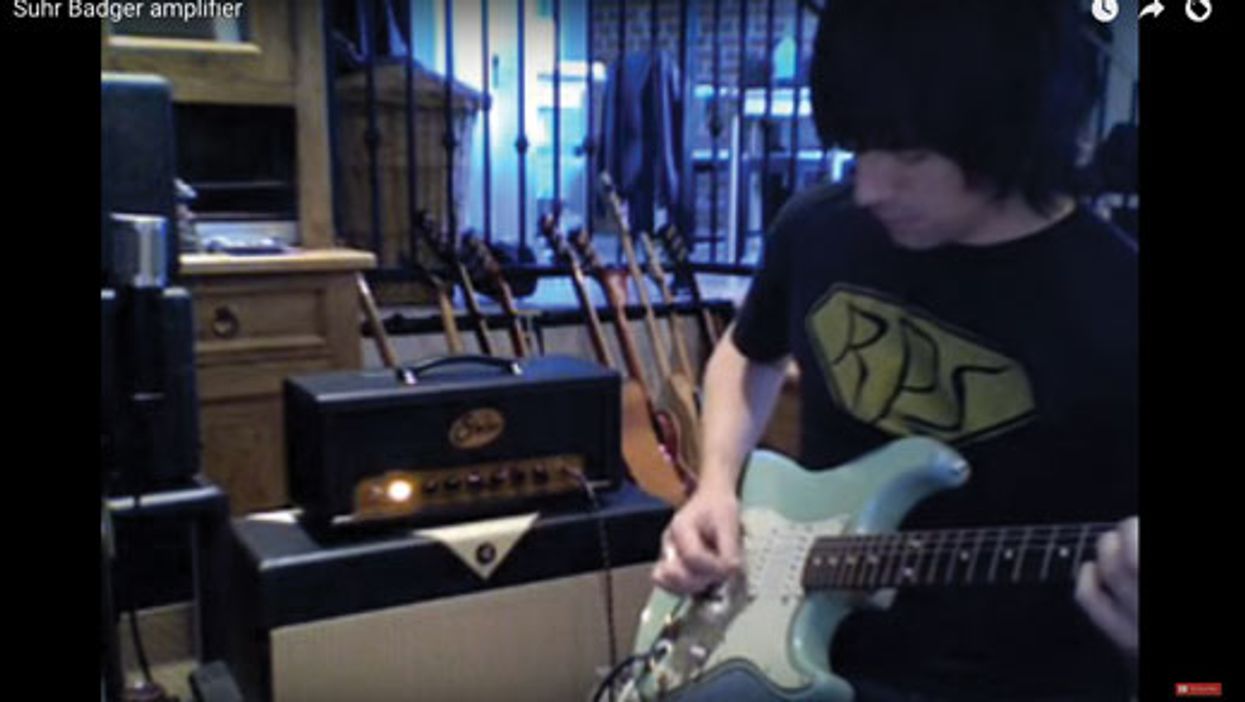First, you must have something of value to offer to even be considered for a gear endorsement. You need to have a high-enough profile as a musician that a company can clearly see value in having you associated with their brand. Exposure for their equipment is the primary reason companies take on endorsers. So, whether it's using their gear onstage, on television, or in YouTube videos, you need to be honest with yourself about your ability to provide that exposure.
The “old days." Before the internet, being associated with a major band or artist was the only way guitarists became well known. If you were in a band with a record deal that was a good start, because it meant there was a promotional machine backing you. And back then, it was all about getting gear in the hands of musicians that were respected and admired.
I think the long-term success of the Gibson Les Paul is the gold standard that every gear manufacturer should shoot for when introducing a product. It should definitely be noted that the Les Paul really wasn't that popular until Mike Bloomfield, Eric Clapton, Keith Richards, and others discovered its merits in the mid-'60s—after it had been discontinued! (Gibson would begin producing them again in 1968.) Moving into the '70s, constantly seeing world-famous guitarists like Jimmy Page, Ace Frehley, and Peter Frampton with Les Pauls was more than just an endorsement. It helped cement the Les Paul into our collective consciousness as one of the primary tools in rock 'n' roll—so much so that even non-guitarists could easily recognize one.
The internet. With the advent of the internet, physical sales of music began to decline. Illegal file sharing took a huge toll and record companies were either trimming fat, consolidating, or outright folding. Recording budgets decreased, studio bookings slumped, and artists had to start relying on touring and merch sales for their income.
But something else happened—something I view as positive. The arrival of tools like Myspace, YouTube, iTunes, and Facebook made it possible to build a fan base, release music, and make a name for yourself as a musician or band without the need for a manager, record company, or any of the other traditional music-biz middlemen. Musicians in small-town America—or anywhere else in the world for that matter—could now reach a huge audience on their own. And with regards to endorsements, fame is fame. Period. I don't think gear manufacturers really care whether you are in a popular band with a major-label deal or live in Omaha and have a YouTube channel with over 100,000 subscribers. If you have an audience and people dig what you are doing, you are in a position to provide valuable promotion.
How I did it. When I was starting my professional touring career in the late '90s, I got in touch with Gibson's Los Angeles artist-relations office and enquired about endorsements. Their policy was to not give anything away, but they would sometimes loan guitars. And if you liked one, they would sell it to you with an artist discount. When they loaned me an SG Standard, I recognized that I was an unknown and would have to prove myself. So, every time a band I was in performed on TV, I'd be sure to set the timer on my VCR to record the show. Every few months, I'd set up a meeting at Gibson and bring the tape where they'd see me on The Tonight Show and Late Show with David Letterman to daytime programs like The Rosie O'Donnell Show—all with the SG they loaned me. They genuinely appreciated my loyalty and enthusiasm for the brand, and eventually let me keep the instrument.
When I started my YouTube channel in 2006, I had no idea YouTube would become such a big part of what I do. At first, I would just occasionally upload lessons and guitar-oriented videos. But that changed in 2007 when the folks at Suhr gave me a great artist-priced deal on a Badger 18 amp. I wanted to do something in return to thank them, so I set up the amp in my little home studio, miked it up, and videoed myself demonstrating what it was capable of. A few weeks after uploading the video to YouTube, Ed Yoon from Suhr reached out and told me they had sold the entire first run of Badgers, and that my video helped get people excited about the amp. My very first YouTube demo!
I'd like to reiterate the importance of viewing a relationship with a gear manufacturer as a two-way street. If you want to endorse a product, ask yourself how you can be of value to the company. What can you do to help spread the word about their products and support them? Don't expect the world at first, but a willingness to earn their respect by showing you have something to offer is a great place to start. Until next month, I wish you happy guitaring!










![Rig Rundown: Russian Circles’ Mike Sullivan [2025]](https://www.premierguitar.com/media-library/youtube.jpg?id=62303631&width=1245&height=700&quality=70&coordinates=0%2C0%2C0%2C0)








